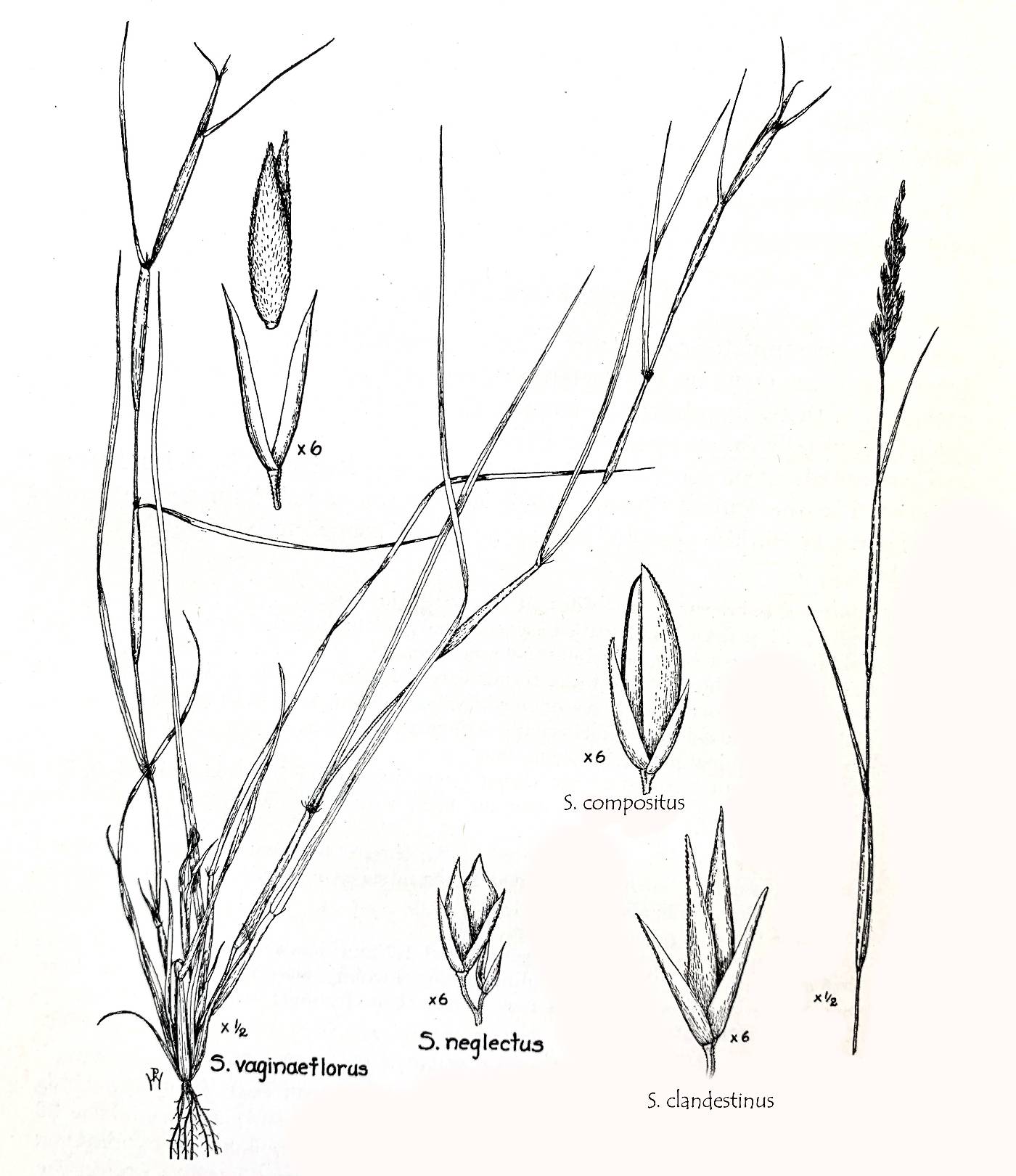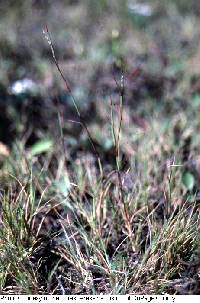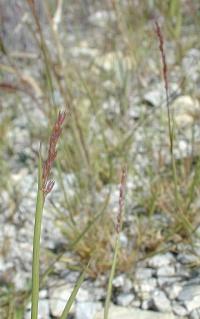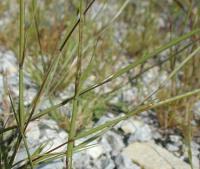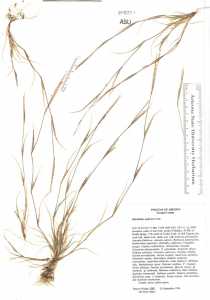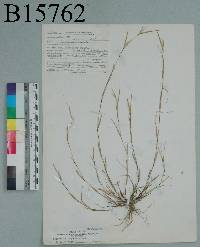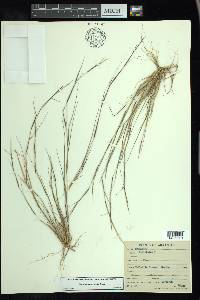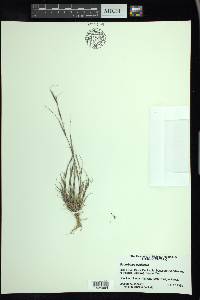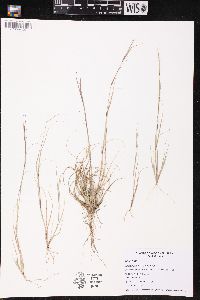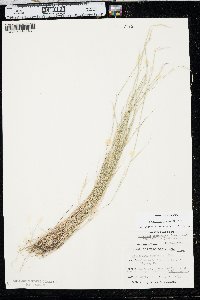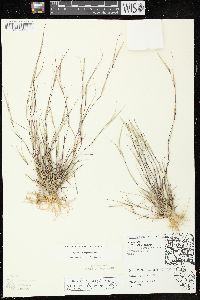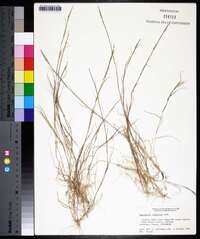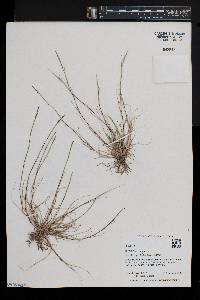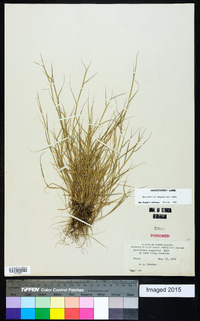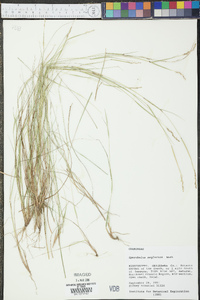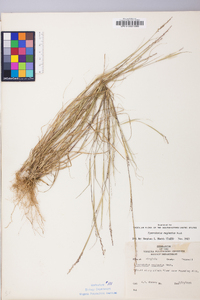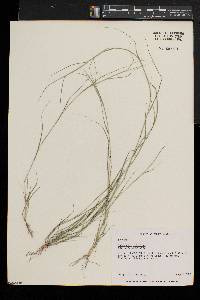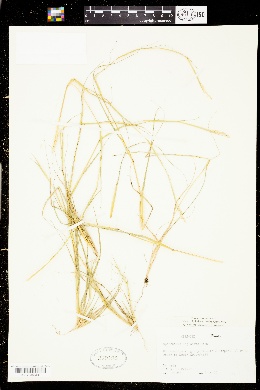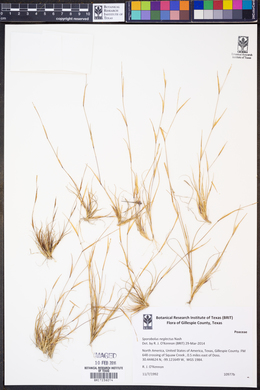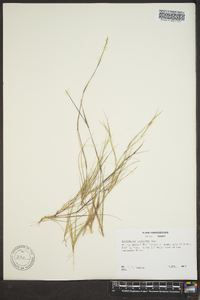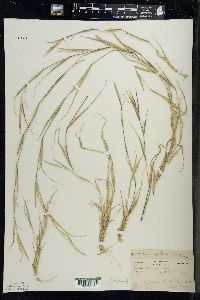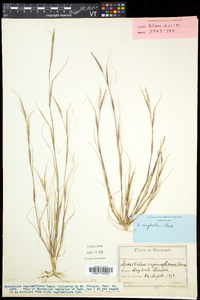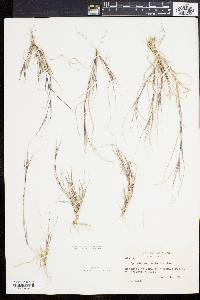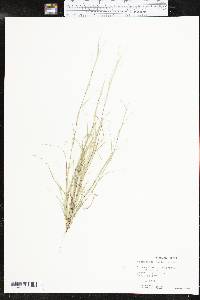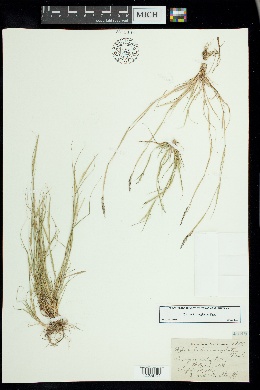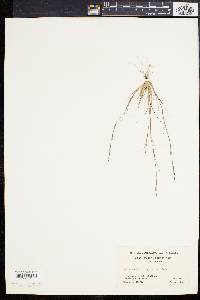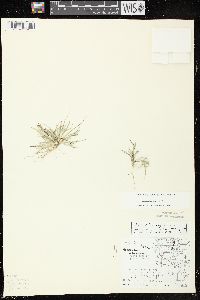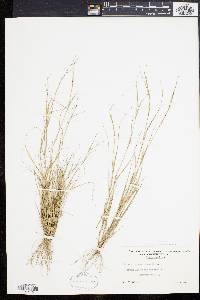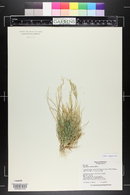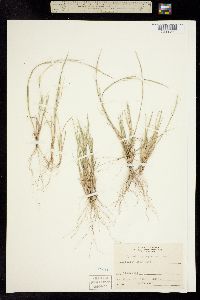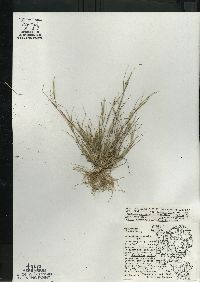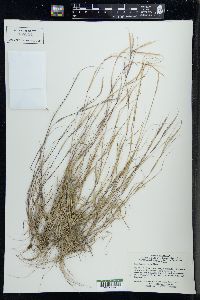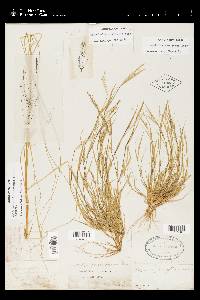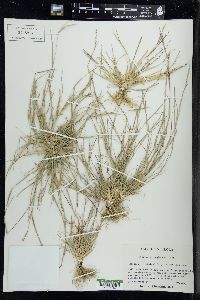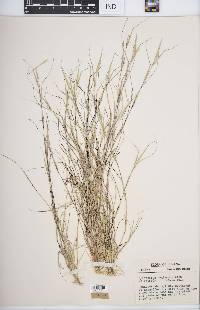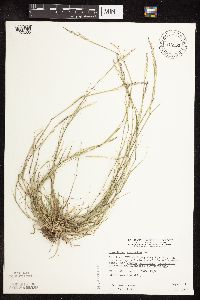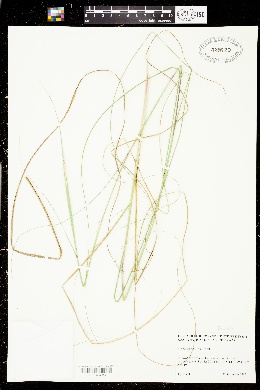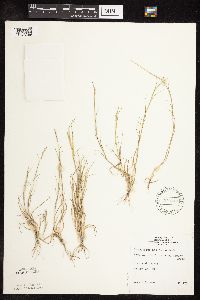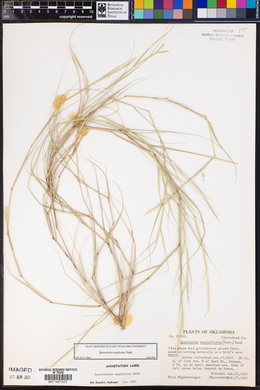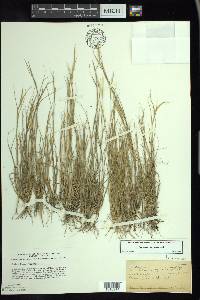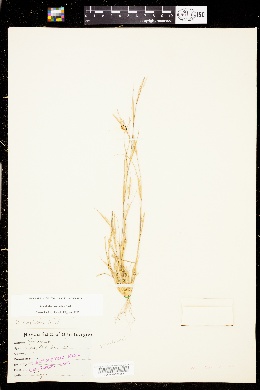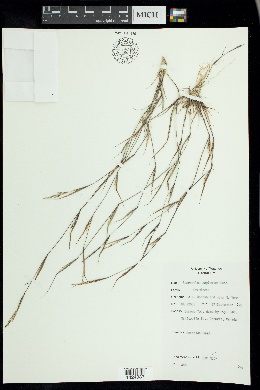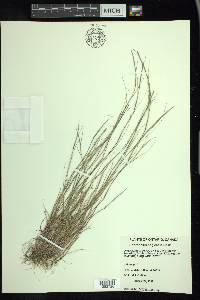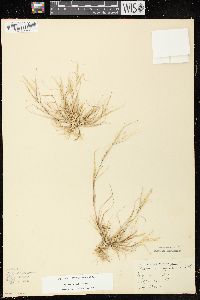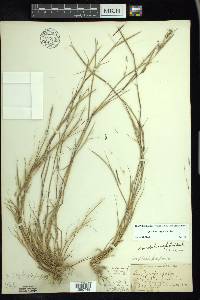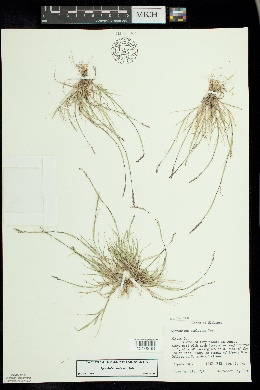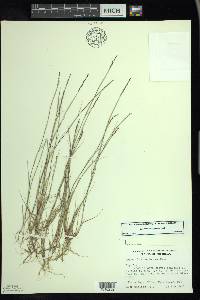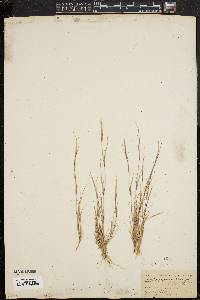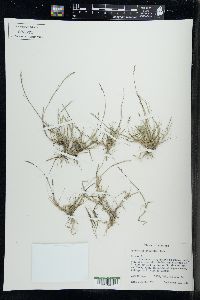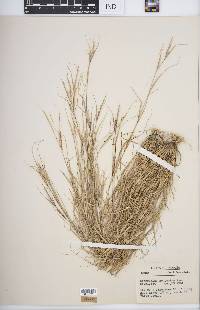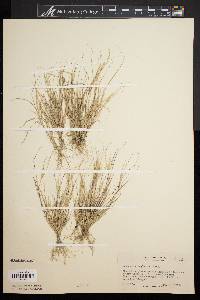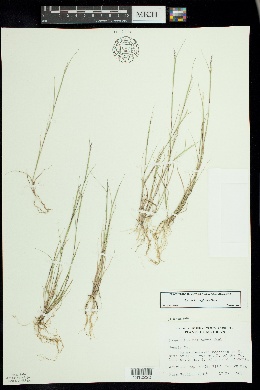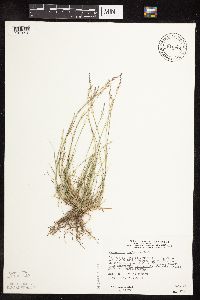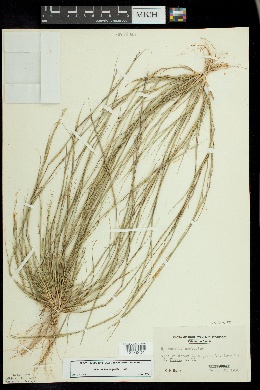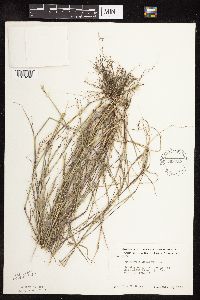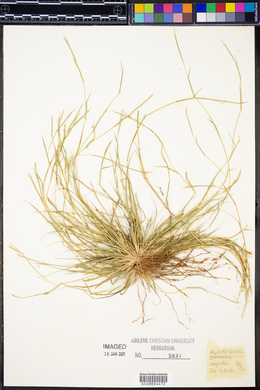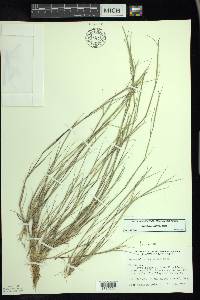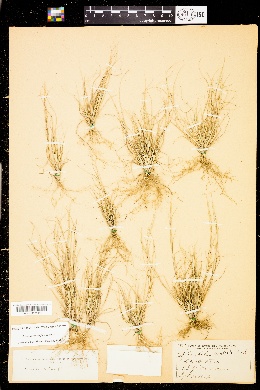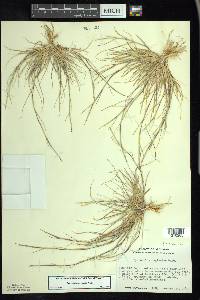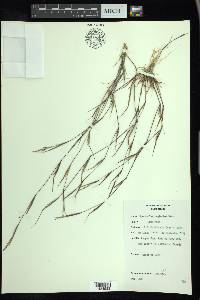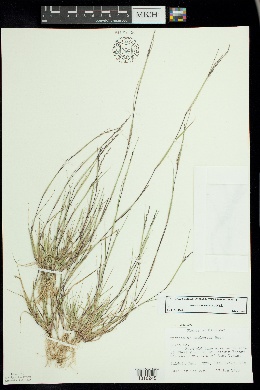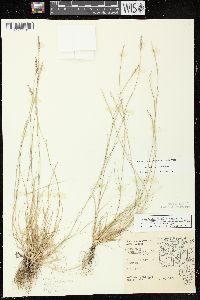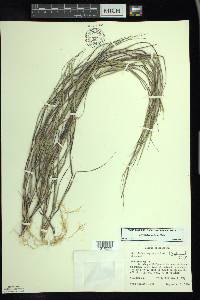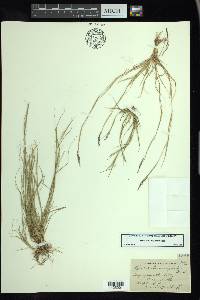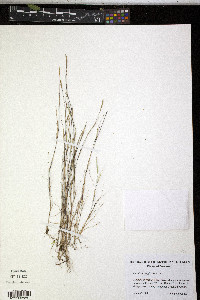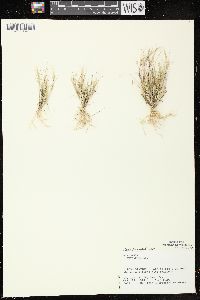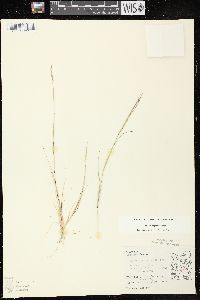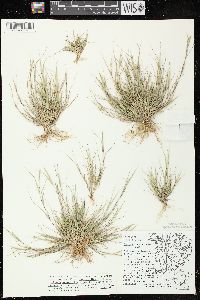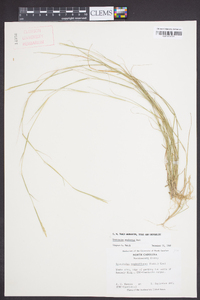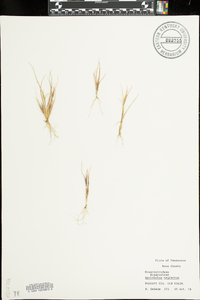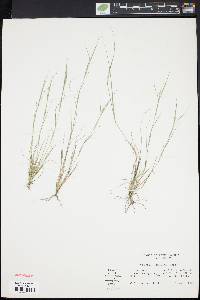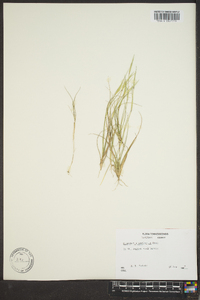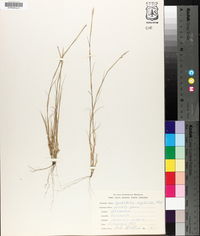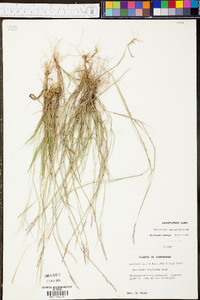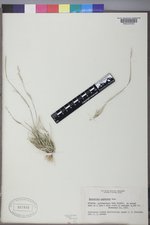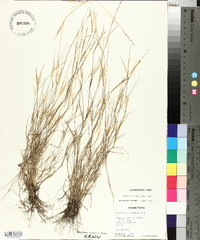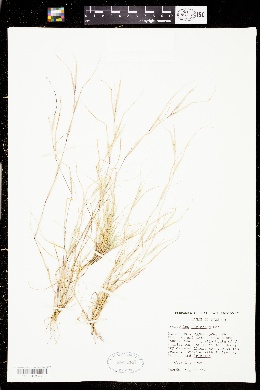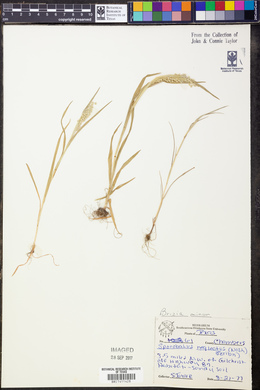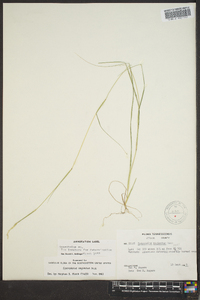Sporobolus neglectus
|
|
|
|
Family: Poaceae
Small Dropseed, more...puffsheath dropseed
[Sporobolus vaginiflorus var. neglectus (Nash) Scribn.] |
Plants annual; tufted, delicate, slender. Culms 10-45 cm, wiry, erect to decumbent. Sheaths inflated, mostly glabrous but the apices with small tufts of hairs, hairs to 3 mm; ligules 0.1-0.3 mm; blades 1-12 cm long, 0.6-2 mm wide, flat to loosely involute, abaxial surface glabrous, adaxial surface scabridulous, bases of both surfaces sometimes with papillose-based hairs, margins smooth or scabridulous. Panicles terminal and axillary, 2-5 cm long, 0.2-0.5 cm wide, contracted, cylindrical, included in the uppermost sheath; lower nodes with 1-2(3) branches; primary branches 0.4-1.8 cm, appressed, spikelet-bearing to the base; secondary branches appressed; pedicels 0.1-2.5 mm, appressed, scabridulous. Spikelets 1.6-3 mm, yellowish to cream-colored, sometimes purple-tinged. Glumes subequal, shorter than the florets, lanceolate to ovate, membranous to chartaceous, glabrous; lower glumes 1.5-2.4 mm, midveins often greenish; upper glumes 1.7-2.7 mm; lemmas 1.6-2.9 mm, ovate, chartaceous, glabrous, acute; paleas 1.6-3 mm, ovate, chartaceous, glabrous; anthers 3, 1.1-1.6 mm, purplish. Fruits 1.2-1.8 mm, obovoid, laterally flattened, light brownish or orangish-brown, translucent, finely striate. 2n = 36. Sporobolus neglectus is native to the Flora region, and grows at 0-1300 m in sandy soils, on river shores, and in dry, open areas within many plant communities, often in disturbed sites. It appears to have been extirpated from Maine and Maryland and is considered endangered or of special concern in Connecticut, Massachusetts, New Hampshire, and New Jersey. Sporobolus vaginiflorus is very similar to S. neglectus, but it differs in having strigose lemmas, sheaths that are sparsely hairy towards the base and, usually, longer spikelets. Annual tufted herb 10 - 50 cm long Leaves: having open sheaths that are inflated and hairless except for the small tufts of hairs (to 3 mm long) at the tips. The ligules are made of hairs 0.1 - 0.3 mm long, and the blades are 1 - 12 cm long, 0.6 - 2 mm wide, flat or with margins loosely rolling toward the upper surface of the midvein (involute), with smooth to minutely rough margins, hairless lower surfaces, minutely rough upper surfaces, and (occasionally) warty-based hairs near the base. Inflorescence: terminal to axillary, branched (panicle), 2 - 5 cm long, 0.2 - 0.5 cm wide, cylindrical, with the base surrounded by the sheath. The primary branches are 0.4 - 1.8 cm long, appressed, and bear spikelets to the base. Fruit: a transluscent light brownish to orangish-brown caryopsis, 1.2 - 1.8 mm long, inversely egg-shaped, flattened laterally, with fine longitudinal lines. Culm: 10 - 45 cm long, erect to decumbent, thin but stiff, hairless. Spikelets: 1.6 - 3 mm long, yellowish to cream, sometimes with a purple tinge, borne on an appressed stalk 0.1 - 2.5 mm long and minutely rough. Glumes: nearly equal, lance-shaped to egg-shaped, membranous to thin but firm (chartaceous), hairless. The lower glume is 1.5 - 2.4 mm long, usually with a greenish midvein, and the upper glume is 1.7 - 2.7 mm long. Florets: usually one per spikelet, with three purplish anthers 1.1 - 1.6 mm long. Lemma: 1.6 - 2.9 mm long, egg-shaped with a pointed tip, thin but firm (chartaceous), hairless. Palea: 1.6 - 3 mm long, egg-shaped, thin but firm (chartaceous), hairless, two-veined, often splitting between the veins when mature. Similar species: Sporobolus vaginiflorus has sheaths that are sparsely hairy near the base, longer spikelets (2.3 - 6 mm), and lemmas with longitudinal lines. The other species of Sporobolus in the Chicago Region are perennials lacking inflated sheaths. Flowering: September Habitat and ecology: Compacted soils along road shoulders and railroad ballast. Occurence in the Chicago region: native Etymology: Sporobolus comes from the Greek words sporos, meaning seed, and ballein, meaning "to cast forth." Neglectus means overlooked. Author: The Morton Arboretum Much like no. 11 [Sporobolus vaginiflorus (A. Gray) A. W. Wood]; lower sheaths generally glabrous; panicle rarely exsert, usually surpassed by the uppermost blade; spikelets smaller, the glumes and lemmas less acuminate and proportionately wider; first glume 1.5-2.4 mm, the second 1.7-2.7 mm; lemma 1-nerved, 1.5-3 mm, glabrous, about equaling the wide, acute, split palea; grain falling free at maturity, and freeing the seed when moistened; 2n=36. Dry sterile or sandy soil; Me. and s. Que. to N.D., s. to N.J., Tenn., La., and Tex.; also Wash. and Ariz. Gleason, Henry A. & Cronquist, Arthur J. 1991. Manual of vascular plants of northeastern United States and adjacent Canada. lxxv + 910 pp. ©The New York Botanical Garden. All rights reserved. Used by permission. From Flora of Indiana (1940) by Charles C. Deam Infrequent throughout the state. It seems to have much the same habitat as Sporobolus vaginiflorus and is often found with it. …… Indiana Coefficient of Conservatism: C = 1 Wetland Indicator Status: UPL |

